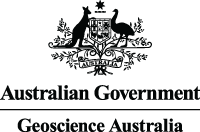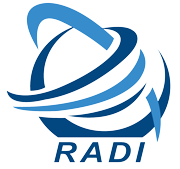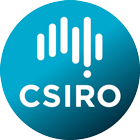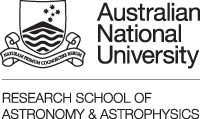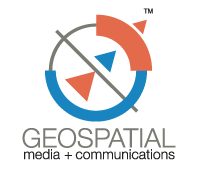Sponsors
| Platinum Sponsor | Geoscience Australia |
| Gold Sponsor | ESRI |
| Silver Sponsor | Institute of Remote Sensing and Digital Earth (RADI) |
| Symposium Dinner Sponsor | Bureau of Meteorology |
| Symposium Welcome Reception Sponsor | Commonwealth Scientific and Industrial Research Organisation (CSIRO) |
| Tea Catering Sponsor | Bureau of Meteorology, CSIRO and Portable AS |
| Symposium Lounge Sponsor | Digital Globe |
| Name Badge and Lanyard Sponsor | Commonwealth Scientific and Industrial Research Organisation (CSIRO) |
| Delegate Satchel Sponsor | Astrium |
| Symposium Meeting Space Sponsor | ST Electronics |
| Symposium Final Program Sponsor | Australian National University, Research School of Astronomy and Astrophysics (ANU RSAA) |
| Chargebar Sponsor | Department of Industry, Innovation, Climate Change, Science, Research and Tertiary Education |
| Student Ambassador Sponsor | Digital Globe |
| Proceedings Sponsor | RMIT, Geospatial Science |
| Australia Sponsors | Melbourne Convention Bureau Melbourne |
| Media Partner | Geospatial World |
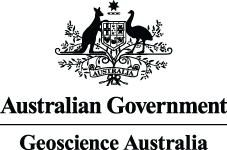
Geoscience Australia is Australia's national agency for geoscience research and geospatial information. We provide geoscientific information and knowledge which enables government and community to make informed decisions about the management of resources, environment, and the safety of people and infrastructure from natural hazards.
The agency is focused on the following Australian Government priorities:
- Responsible Resource Development, including developing and promoting a prospectus of Australia's onshore and offshore resources to maintain Australia's share of global resource markets.
- Cleaner and Low Emissions Energy Technology, including carbon capture and storage and geothermal energy.
- Community Safety, including mitigating the impact of natural hazards such as floods, earthquakes and landslides, and supporting governments to respond more effectively when disasters do occur.
- Improving Marine Planning and Protection, including supporting Australia's claims to territories and resources, and supporting management of seafloor and coastal biodiversity.
The outcome of our work is an enhanced potential for the Australian community to obtain economic, social and environmental benefits through the application of first class research and information. Remote sensing plays a key role in achieving these outcomes.
Geoscience Australia's remote sensing capability is delivered through the National Earth Observation Group and Geoscience Australia's Observatories and Engineering Services.

Esri’s GIS technology enables organizations to effectively analyze and manage their geographic and imagery information to make better decisions. Organizations are supported by experienced, knowledgeable staff and an extensive network of business partners and international distributors.
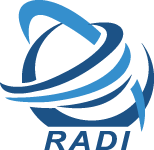
The Institute of Remote Sensing and Digital Earth, Chinese Academy of The Institute of Remote Sensing and Digital Earth is a comprehensive research institute directly under the Chinese Academy of Sciences. The strategic objectives of RADI are to explore leading technologies in Earth observation, geospatial information science, and the mechanisms for acquiring and distributing remote sensing information; focus on the construction and operation of major Earth observation infrastructure and the air-space-ground integrated Earth observation technology system; enhance its capacity for providing resource-environment spatial information at regional and global levels by establishing a digital Earth scientific platform, therefore building itself into a comprehensive, world-class research institute.

The Bureau of Meteorology is Australia’s national weather, climate and water agency. Its expertise and services assist Australians in dealing with the harsh realities of their natural environment, including drought, floods, fires, storms, tsunami and tropical cyclones.
Satellite remote sensing underpins many of the Bureau’s services and the Bureau is one of the largest users of satellite data in the Australian government.
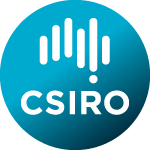
The Commonwealth Scientific and Industrial Research Organisation (CSIRO) is Australia’s national science agency and one of the largest and most diverse research agencies in the world. CSIRO has extensive Earth observation capabilities, and is recognised in Australia’s Satellite Utilisation Policy as one of three Australian Government agencies jointly responsible for Australia’s civilian Earth observations from space (EOS) activities (along with Geoscience Australia and the Bureau of Meteorology).

Portable Analytical Solutions (PAS) are the Australian, NZ, PNG & Indonesia distributor of NIR ASD spectrometers for remote sensing in a variety of applications including; Minerals Analysis, Forestry & Crops and Soils research. For all Sales, Service and Customer support, contact PAS on (02) 4381 2844.

DigitalGlobe is a leading provider of commercial high-resolution earth observation and advanced geospatial solutions that help decision makers better understand our changing planet in order to save lives, resources and time. Sourced from the world’s leading constellation, our imagery solutions deliver unmatched coverage and capacity to meet our customers’ most demanding mission requirements. Each day customers in defense and intelligence, public safety, civil agencies, map making and analysis, environmental monitoring, oil and gas exploration, infrastructure management, navigation technology, and providers of location-based services depend on DigitalGlobe data, information, technology and expertise to gain actionable insight. DigitalGlobe is a public company listed on the NYSE as DGI, and is headquartered in Longmont, Colorado. In January 2013, DigitalGlobe and GeoEye combined to become one DigitalGlobe, creating a company capable of providing greater value to customers through an integrated constellation and a broader set of products and services. For more information on the combination and its benefits, visit www.digitalglobe.com/combination. DigitalGlobe is a registered trademark of DigitalGlobe.

Astrium is the number one company in Europe for space technologies and the third in the world. It is the only global company that covers the full range of civil and defence space systems, equipment and services. Astrium Satellites is a leading provider of satellite system solutions, including spacecraft, ground segments, payloads and equipments.

ST Electronics (Satcom & Sensor Systems) delivers innovative, broadband wireless communication and sensor solutions that enhance connectivity and safety globally. The company also undertakes the design, development and production of advanced satellites for Earth observation applications, and offers a comprehensive suite of remote sensing solutions to customers worldwide. Please visit www.stee.stengg.com.
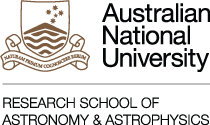
The Advanced Instrumentation and Technology Centre (AITC) at ANU is a national facility that supports the development of precision instruments for astronomy, space and geospatial applications. It offers an end-to-end capability with expertise in the design, manufacture, integration and test of precision instrumentation and complex systems.

Within the Department of Innovation, the Space Coordination Office is the central point of contact and coordination for all Australia’s national and international civil space activities. The Office coordinates the implementation of Australia’s Satellite Utilisation Policy and administers the Space Activities Act 1998.

RMIT School of Mathematical and Geospatial Sciences draws together disciplines involving the collection and analysis of data and the understanding and optimisation of systems through modelling and visualisation. The School aims to generate original knowledge in these fields while addressing local and global problems.

Geospatial Media & Communications works to initiate a new era of industrialisation of geospatial technology by raising the profile and expanding the horizons of geospatial industry worldwide. It enables the transfer of the value of geospatial technology for the benefit of the world population and for the sustainable development of the planet. Geospatial Media & Communications, through its publications and conferences, creates awareness about geospatial technology; connects the stakeholders; advocates for the right policy environment; and provides an ideal platform for business development activities.


 IGARSS13
IGARSS13 @IGARSS2013
@IGARSS2013